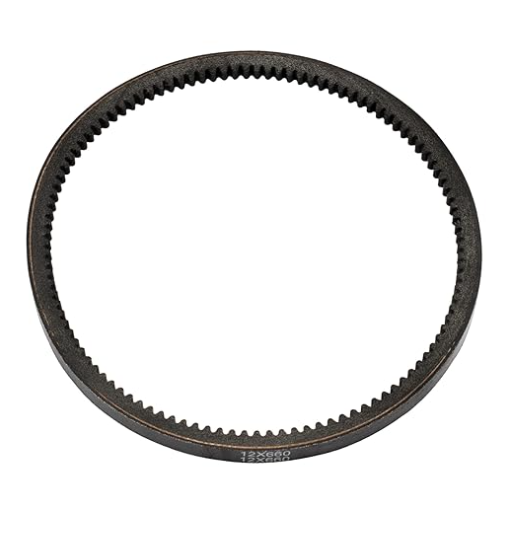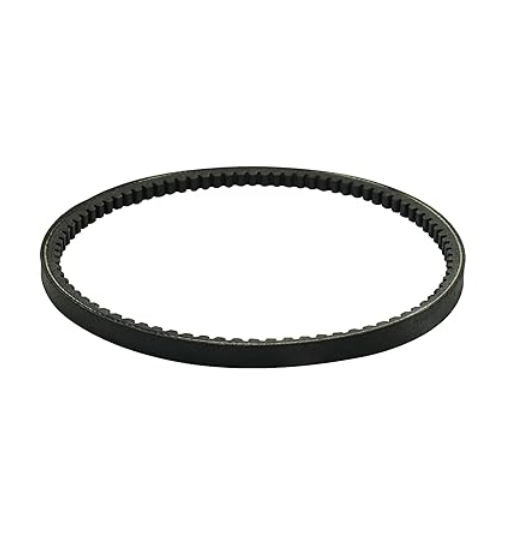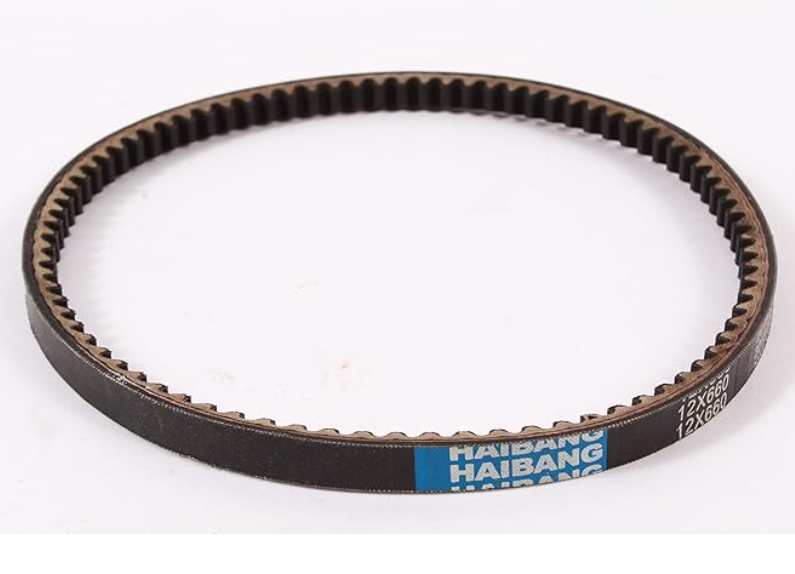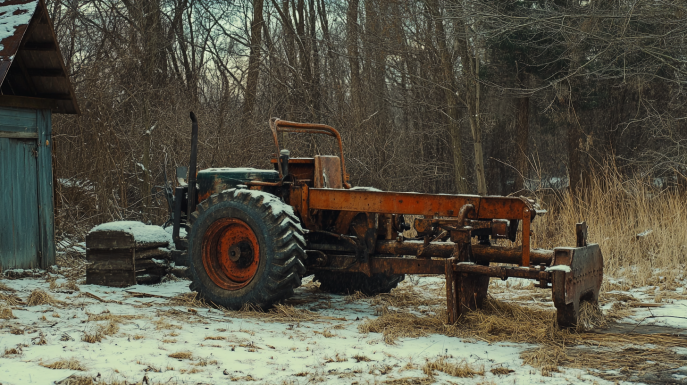
22773 26″ Drive Belt 4XLA fits for Earthquake Tiller Model 29409, Compatible with CountyLine CRT 20969 Tiller 31315,Earthquake Tiller Parts(1PACK)
- Products:The 22773 26″ Drive Belt (4LXA Power Rated)fits for Earthquake fits 29409 Tiller Parts ,fits for CountyLine CRT 20969 Tiller 31315.

22773 26″ Drive Belt (4LXA Power Rated) Replacement Parts Fits for Countyline CRT 20969 Tiller 31315,Drive Belt Compatible with Earthquake Tiller Model 29409
- 【Compatible model】:The 22773 26″ Drive Belt(4LXA Power Rated)fits for Earthquake fits 29409 Tiller Parts ,fits for CountyLine CRT 20969 Tiller 31315

Genuine 22773 26″ Drive Belt 4XLA Fits CountyLine CRT 20969 Tiller 31315
- Brand New Ardisam Drive Belt… · Drive Belt · Genuine Ardisam Part # 22773 · 4LXA Power Rated · Fits CountyLine 20969 CRT Tiller (Ardisam Owned Brand) · Genuine OEM Ardisam Part
Getting the Right Replacement Parts for Your Countyline Tiller
Countyline tillers are great options for preparing soil for planting gardens and landscaping projects. These rugged and powerful machines can churn through dirt, mulch, and roots with ease. However, like any machine, Countyline tillers require maintenance and occasional repairs. Knowing where to source high-quality OEM and aftermarket parts is crucial for keeping your tiller running in tip-top shape. This buying guide will explore everything you need to know about finding the right replacement parts for Countyline tiller models.
Where to Buy Genuine and Third-Party Countyline Tiller Parts
When purchasing replacement parts for your Countyline tiller, you generally have two options:
- Genuine OEM parts sourced directly from the manufacturer. These parts are made specifically for Countyline machines and engineered for optimal performance and durability. OEM parts tend to be more expensive but are worth it for critical components.
- Aftermarket parts produced by third-party companies. These parts offer a more affordable alternative but may not quite match the quality of OEM components. Aftermarket parts work well for less complex accessories and body panels.
The best sources for genuine Countyline tiller parts include:
- Directly from Countyline’s website – Countyline offers a parts lookup tool and the ability to order online or find local dealers. This ensures you’re getting the right OEM part number.
- Authorized Countyline dealers – Dealers can order parts directly from the manufacturer. Visiting a dealer is recommended for advice on the right part and potential servicing needs.
- Hardware stores – Major chains like Home Depot, Lowe’s and Tractor Supply stock common Countyline tiller replacement parts like belts, tines, wheels and attachments.
Aftermarket and used Countyline parts can be found at:
- Third-party part suppliers – Retailers like RCPW and Jack’s carry a range of aftermarket Countyline tiller parts. Quality can vary, so read reviews.
- eBay & Amazon – Used genuine Countyline parts are available on these major online marketplaces. Know your part numbers and closely inspect condition.
- Repair shops – Local small engine repair technicians may have a selection of used/refurbished Countyline parts from previous jobs. Ask ahead.
- Auctions & salvage yards – Search for a used or broken Countyline tiller to salvage parts from. Condition is as-is.
Key Components and Common Replacement Parts
Countyline tillers consist of several main systems that may require new parts over time. Here are key components and associated parts to be aware of:
- Engine – Spark plugs, air filters, fuel lines, carburetors, and ignition coils are common engine parts to replace. Refer to the engine model and serial number when sourcing.
- Transmission – Gears, belts, chains and associated sprockets are vital transmission parts. Closely match worn parts to new ones.
- Tines – These steel bits churn and till the soil. Replace damaged, bent or worn-out tines in full sets for proper tilling.
- Wheels – Wheels take abuse from rough terrain. Replace cracked hubs, rims and busted tires as needed.
- Cables – Throttle, brake and clutch cables can stretch, fray or kink over time. Replace immediately to restore full function.
- Handles – Handgrips, levers and control hardware wear out with use. Swap damaged handles for improved comfort and safety.
- Body panels – Bolts, belt guards, housings and shrouds are not crucial but may need replacing if cracked or missing.
- Attachments – Optional accessories like trailers, furrowers, cultivators have their own part needs.
Carefully inspecting your tiller and identifying issues will direct you to the necessary replacement part. Keep the tiller manual handy for diagrams and part numbers.
How to Replace Common Countyline Tiller Parts
Once you’ve sourced the correct Countyline tiller replacement part, you’ll need to properly install it. Here are tips for swapping out some typical components:
Engine Parts:
- Air filter – Locate the air filter housing on the engine. Remove the cover and old filter. Replace with a new filter of the same type and size.
- Spark plug – Use a spark plug wrench to remove the old plug. Check the gap on the new plug and thread it into place with the wrench.
- Fuel lines – Drain the old fuel lines at the tank and carburetor. Cut new fuel line to length and install with hose clamps.
Transmission Parts:
- Belt – Loosen the bolts on the pulley covers. Roll the old belt off the pulleys. Fit the new belt onto the pulleys and reinstall covers.
- Gears – Removing the gear case cover provides access. Match the old gears to the new ones for shaft placement and size. Apply gear grease before reassembling.
- Bearings – You’ll need a gearcase puller tool. Carefully pull out the worn bearing and press in the sealed replacement.
Tines:
- Lower tiller bars to access tines. Remove old shear pins and bolts. Match new tines length and hole alignment. Reinstall hardware.
Wheels:
- Raise and support the tiller safely. Remove wheel hardware and swap new wheel into place. Tighten hub bolts and inflate tire to proper PSI.
Cables:
- Loosen cable hardware at both ends. Pull the old cable out completely and thread in the new one. Reconnect ends and adjust tension as needed.
Always refer to your owner’s manual for full safety and replacement instructions. Seek assistance for complex transmission or engine repairs.
Maintenance Tips to Extend Countyline Tiller Part Life
Proper maintenance of your Countyline tiller helps minimize part wear and tear. Here are some key maintenance tips:
- Change engine oil regularly – Old oil causes accelerated wear in gears, bearings and other moving parts. Stick to the manual’s guidelines.
- Inspect belts, cables and guards – Look for cracks, stretching, fraying or other damage. Replace suspect parts immediately.
- Lubricate gears, shafts and bushings – Use quality gear grease and lubricating oils to prevent seizing and rust.
- Check tire pressure – Under-inflated tires make the tiller work harder and get damaged more easily.
- Clean air filter & cooling fins – Prevent engine overheating and remove debris that can enter the carb.
- Sharpen tines – Dull tines tear rather than cut cleanly. Sharpen regularly for best tilling performance.
- Check engine mounting bolts – Vibration can loosen fasteners over time. Tighten bolts to specified torque.
- Wash dirt buildup – Excess dirt, especially on engine and transmission parts, retains moisture and causes rapid wear.
Following the manual’s maintenance schedule keeps parts in optimum condition for longevity. Addressing issues early also prevents more extensive repairs down the road.
Finding Manuals and Part Diagrams for Countyline Tillers
Having the right Countyline tiller manual on hand makes part identification and replacement much simpler. Here’s where to find manuals:
- Original manual – Check the documentation that came with your tiller first. Manuals contain part diagrams and lists.
- Online parts lookup – Countyline’s website has an online parts finder with diagrams and part numbers.
- Contact Countyline – You can call Countyline customer service and request a replacement manual if yours was lost.
- Look online – Find manuals for most Countyline tiller models available for download from third-party websites.
- Local dealers – Dealers often keep spare manuals for Countyline products they sell. Ask for a copy.
For uncommon Countyline tiller models, you may need to source a paper manual through eBay or specialty retailers. Always ensure the manual matches your tiller’s make and model number to get accurate part information.
Having the schematic drawings and part numbers allows you to confidently order the components you need for DIY repairs and maintenance. Check that any replacement parts match the specifications in your Countyline manual.
Troubleshooting Countyline Tiller Problems
When your Countyline tiller exhibits abnormal symptoms, methodically troubleshooting helps identify underlying issues and bad parts. Follow this general troubleshooting process:
- Define the problem – Note exactly what the tiller is doing or not doing. When did it start? Does it occur under specific conditions?
- Inspect visually – Look for external causes like blocked intakes, damaged tines, stuck controls and loose or broken components.
- Refer to manual – Consult troubleshooting and diagnostics sections for possible causes related to the problem.
- Isolate source – Try to localize the issue to the engine, transmission, tines, or a specific part. Test areas individually.
- Replace likely parts – Swap out any visibly damaged pieces for new ones. Also replace parts prone to specific issues.
- Retest performance – Run the tiller under normal operating conditions to see if problem persists. Repeat process if needed.
- Inspect internally – For persistent issues, deeper inspection of internal engine or transmission may be needed.
Troubleshooting helps zero in on faulty components before replacing multiple parts randomly. Always start with more affordable and easier fixes before moving to complex solutions.
Finding Replacement Countyline Tiller Parts Online
The internet provides an incredibly convenient way to research and purchase replacement Countyline parts for your DIY repair projects. Here are some tips for finding parts online:
- Use Countyline’s parts lookup – Their tool provides OEM part numbers, availability, and pricing estimates.
- Search reputable parts retailers – Online parts stores have extensive Countyline tiller part inventories with detailed descriptions and images.
- Use exact part numbers – Match parts by the model and/or serial number from your tiller and manual diagrams.
- Factor in shipping – Ensure the total cost with shipping still provides savings over local sources.
- Buy from US sellers – For faster shipping and easier returns, purchase from US-based Countyline parts sellers.
- Read seller reviews – Choose sellers with positive feedback scores and satisfaction ratings. Avoid anything questionable.
- Compare prices – Check 2-3 websites for the best deal on the exact same part. Don’t assume the cheapest price is the best overall value.
- Check warranty terms – Buying from an authorized Countyline retailer can provide a replacement warranty on parts.
Doing some upfront research ensures you find the optimal Countyline tiller parts online for your repair needs. Always double check part compatibility before ordering.
Top Tips for DIY Countyline Tiller Repairs and Parts Replacement
Here are some additional tips to ensure success when carrying out DIY repairs on your Countyline tiller:
- Review the full repair procedure in the manual before starting, and gather all necessary tools.
- Work slowly and methodically. Don’t force parts or overtighten hardware.
- Take pictures during disassembly to assist with correct reassembly. Label key components.
- Clean parts thoroughly before installation to remove dirt, grime and old lubricants.
- Apply fresh lubricants like gear oil, grease and anti-seize compounds where specified.
- Double check manuals that replacement parts match original Countyline parts exactly.
- Test function after each repair before reassembling fully. Confirm issues are fixed.
- Tighten bolts and hardware to torque specs in manual with a calibrated torque wrench.
- Road test tiller after repairs and monitor closely for correct operation and any issues.
Following the proper Countyline procedures and taking your time leads to repair success. Know your limitations and have professionals handle engine overhauls or electrical issues. With routine maintenance and proper parts replacement when required, your Countyline tiller will provide years of dependable service.
Conclusion
From routine maintenance items like spark plugs and air filters to major components like transmissions and engines, this buying guide covers everything you need to know about sourcing replacement parts for Countyline tillers. Identify issues accurately, find parts online or through local dealers, then use your manual for correct installation. Investing in quality OEM or aftermarket parts as needed will maximize the performance and lifespan your Countyline tiller. With the right knowledge and parts, you can keep your Countyline tiller churning along smoothly for all your gardening and landscaping jobs.

